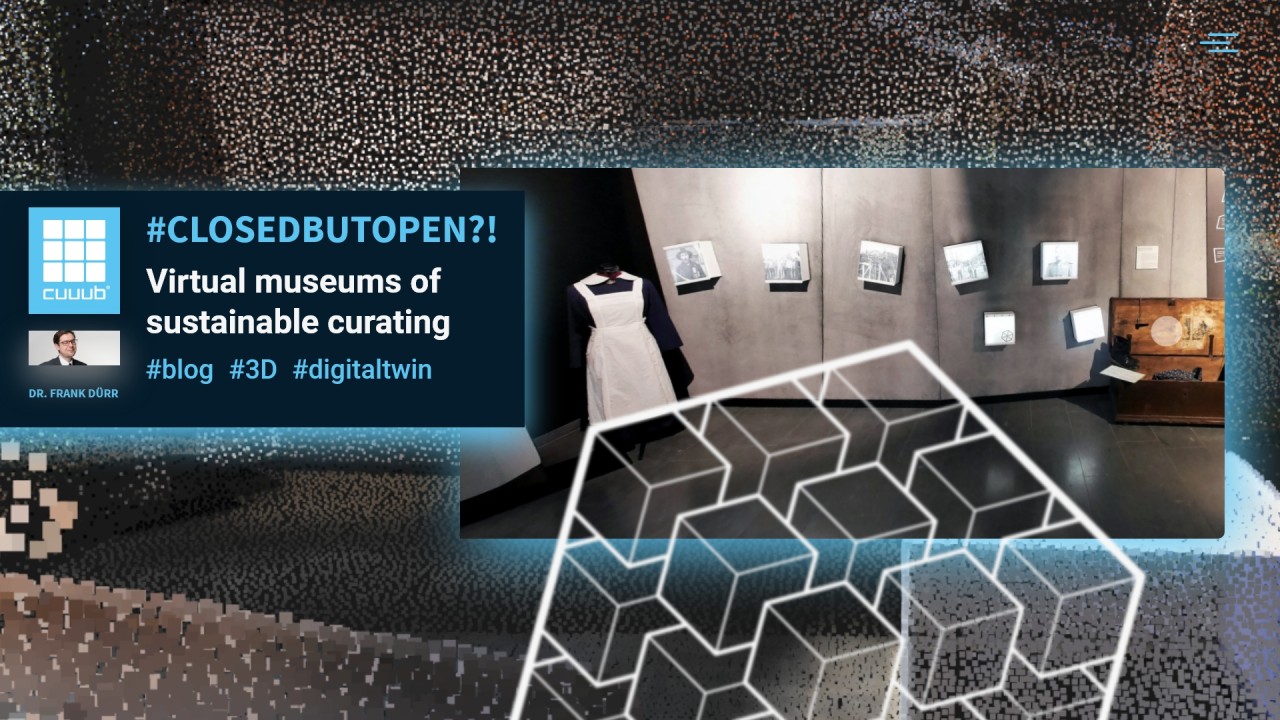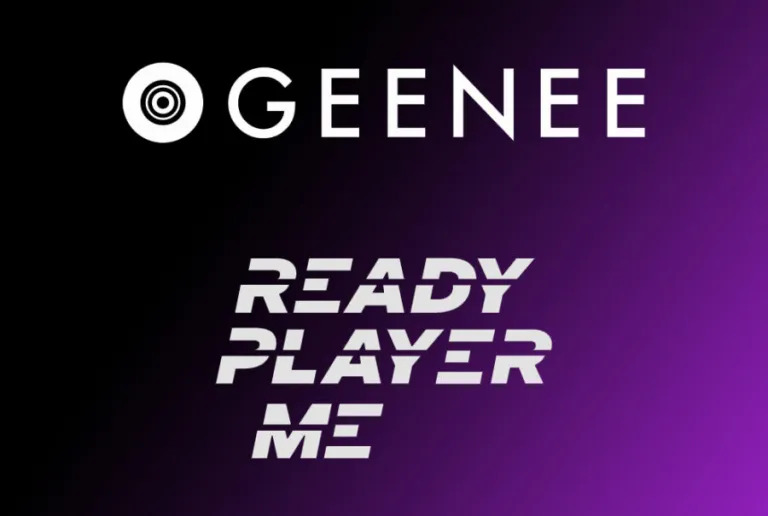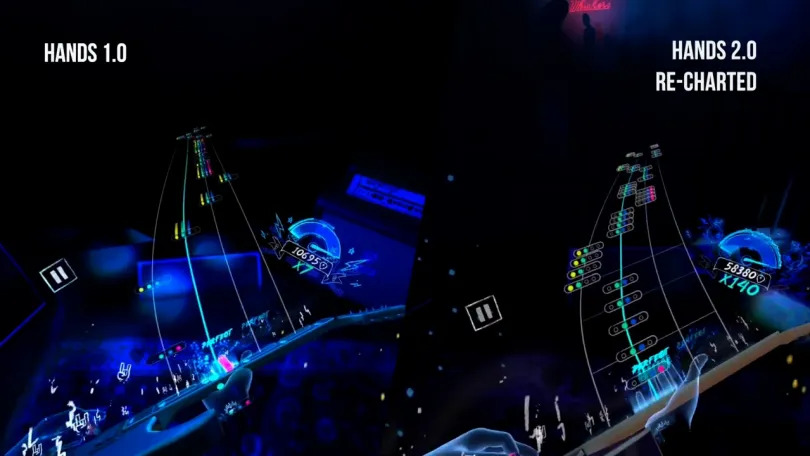Museums in Lockdown
All cultural institutions have to cope with hefty tasks, especially in times of crisis. Museums, too, are certainly not excluded from the current misery, as their doors are closed, and the “real” visitor numbers abruptly sunk to zero. Now, the time for real online offers has begun. Before the pandemic, only large and/or especially innovative museums dedicated themselves to these topics. Due to the longer-than-expected existing lockdown, the museums are now undesirably confronted with a new age. Most of them reacted quickly and early to the changes. However, which of those formats are successful and sustainable? Which formats are expedient? In the best-case-scenario, which formats are even profitable, if you think about how many offers on the internet are free of charge? Are museums allowed to demand entry fees for digital museum visits? Are cultural institutions allowed to sell tickets for virtual tours? Even more so, should they? I’d like to elaborate on some topics that concerned me during the creation of a digital strategy for a museum: the acceptance of digitalisation was hardly available a few years ago. Today, however, no director of a museum trusts him or herself anymore to view digitalisation as irrelevant, at least in official statements. #closedbutopen is labelled quickly on websites and social-media channels. But what follows is mostly not strategic and even less innovative. It quickly becomes clear who has understood the digital challenge as an opportunity.
The digital museum
Directors and curators could try to answer one key question when planning and organising digital offers, in order to avoid the most serious mistakes: Which digital/virtual solution connects the planning of museums and exhibitions as well as the sustainable and profitable at least cost neutral handling of the representation of our cultural assets? Which digital/virtual solution also enables a meaningful form of experiential mediation? The sole digitalising of one’s own inventory seems to be fundamental, but not yet the solution to successfully completing the knowledge transfer. I don’t know how you feel about it, but the sole scrolling through image databases of objects doesn’t seem like the ideal solution to me for presenting museum inventory in the 21st century. The “Städel” in Frankfurt am Main with its digital collection, for example, had the same view on things. They developed a playful handling of the database entries, among other things. Thinking about how to collect the data wasn’t the only thing they thought about. The “Städel” also thought about the best way to present the data, in order to make the digital use more attractive for users. Image sliders of exhibition pieces, meaning images strung together to form an exhibition, seem rather dreary and bland, even if they are presented by Google Arts and Culture. Exceptions confirm the rule here. With outstanding image quality and short, appealing texts, the “Landesmuseum Württemberg” shows a shapely example for the handling with this platform. They deliver a simple and attractive introduction to the topic “Fashion?!”. The “Badische Landesmuseum” also presents a current approach which should urgently be followed. The approaches and concepts of the museum X demonstrate a few progressive ideas that give hope for innovative realisations.
Virtual tours and accessibility
Virtual tours are currently very popular. This format has varied characteristics. Live tours with cameras on the mobile tripod enable an insight into the current present exhibition through real guides. Virtual 3D-tours through the existing exhibitions, however, seemingly best manage to show the way the house presents these objects and in such a context of how the museum organises, locates, and sets knowledge into scene. Also, these offers are available 24/7. At the same time, these tours in 360° have the advantage that it is simpler for visitors to get to know and explore the museum and its exhibition rooms. The feeling of walking through an exhibition also reminds us more of the actual analogue museum visit. We have realised this with CUUUB, amongst others in the “Westfälischen Salzwelten”. The project was developed in cooperation with the commune “Soest” and the German Telekom. Telekom’s manager, Levent Dogan talks about the advantages of this solution in the video: “Weißes Gold erleben”.
Virtual storytelling
Contrary to the analogue experience, the virtual offers even more far-reaching possibilities to connect the existing stories and fascinating objects with other sources, to communicate it more interactively as well as to present it more aesthetically pleasing, even if it is not possible to compensate the missing materialistic aspects completely. However, the possibilities of the virtual museums with the knowledge of exhibition-making from curators can be of immense value. It can lead to an enthusiastic experience if the exhibition is curated with heart and soul.
Just imagine a curator dedicating him or herself to a virtual exhibition with the same commitment as to an analogue exhibition. In part, this is currently done in such a way out of necessity or due to free time, but the professional use of these tools is also worthwhile in the long run as they can generate an unimaginable reach. The connecting of storytelling strategies, 3D or in some cases also virtual or augmented reality is currently a new form that still has to find its own conventions and, thus, also its acceptance. At the moment, these innovative approaches and experiments serve as play for the museum directors. Especially in the VR-department, the first approaches are very experimental and therefore have a special appeal to museum employees. However, concerning these VR-approaches, it must be considered that the necessary tools of the digital visitors are possibly not yet completely available or that the visitors need to be in the museum, in order to use the offer. As such, it is surely advisable for the mass phenomenon of the digital exhibition to look more closely at the representation in the 3D-space. Combined with the narration of a good story, combined with the entertaining build-up of an exhibition, and transformed into the virtual room with numerous features that make the online visit even more attractive, an unimaginably wide playing field and an aesthetical medium to represent objects, to tell stories, in order to bring forth personalities and to be able to experience contexts is made available for curators.
Analysis of the virtual museum visits
New aspects of analysis and of evaluation also become increasingly evident through a digital twin of the museum. The movement of virtual visitors and the areas they avoid or only briefly look at are presented anonymously and pseudonymised in real time on a heatmap. The analysis of the routes walked, and the length of stay can, thus, be evaluated in the pre-visit and in the first live visits already. The chances of optimizing the exhibition during its process is further increased in a virtual museum. And we are only at the beginning of a new data collection for museum managers.

Dashboard of CUUUB with a real-time heatmap of scanned areas and numerous other features for analyzing the offer in the museum’s digital twin
Digitalising analogue sources of income
Most of the offers on the web are free of charge for users. Only a few live tours through museums via smartphone currently cost a few euros. However, there are numerous possibilities to use virtual museums in such a way that certain services and offers can also be monetised. With CUUUB, for example, an immersive webshop can be fully integrated that comes up with numerous extras and “clearly stands out from the grey mass of e-commerce systems”, says Prof. Dr. Oliver Höss.
Room planning and safety
One aspect that has not been mentioned so far is the sustainability of the online museum. Take a minute to think about your last analogue exhibition (even if it has been quite a while since then) and how much material was used here, how much money was invested to build the exhibition or how many resources landed in the bin after the exhibition. In the almost 7000 museums solely in Germany zillions of exhibitions were realised in the last years that weren’t always realised with a sustainability concept. How can this be sustainably accomplished through digitalisation? The German Museum presents this with a first prototype on the same technological base as is used by CUUUB. A scanned point cloud and, thus, a high-precision digital twin of the German Museum creates a 3D image that can be used in a variety of ways after it has been captured once. Based on this 3D model, future-plans of analogue exhibitions can be executed very accurately. The exhibition planning is realised similarly to the “BIM”-method, the “Building Information Modelling”. The digital images of the objects are positioned curatorially in the 3D model of the museum. The curators virtually run through their own show in advance and use these plans to further consider their concept. Playing out this digital twin of the exhibition as a separate pillar of the exhibition project also comes much closer to the analogue exhibition experience itself. Combining it with security systems in the digital twin is also possible. The technologies surrounding the topics IoT and sensor technology offer opportunities, amongst other things, to monitor the exhibition and to read out the existing data, displaying it in its own dashboard.
A virtual tour of the point cloud of a museum site in CUUUB.
The virtual visitors with real relevance
And finally, a short plea to recognise virtual visitors as real museum consumers. The tenor still exists in many museums that relevant numbers should only be measured according to the “real” museum box office. Where does this misbelief and stoic adherence to this attitude come from? Of course, we all love the experience in the on-site museum, why not?! But the desire for a haptic experience is not being met at all in many museums, and the representation of objects is improving in the digital space. It will bring visitors much closer to the object in the near future than would ever be allowed in the “real” museum. Here are a few keywords which to connect to later on, as each and every one of these topics deserves their own article:
- (Global) range
- Virtual (historical) context
- Co-text through objects of other museums
- Duration of exhibition
- Flexibility
- Availability
- Bandwidth of the means of communication
- Gamification
- Participation
Let’s return to the key question: Which formats are successful, sustainable, expedient, profitable? I’d like to give a short answer to this, but also invite you to extend this list, to take a stand or to engage more closely with our approach with CUUUB. Or to search for the lively exchange in communities such as “WeAreMuseums”.
In view of diverse perspectives on the museum system and the daily as well as specific projects, I see the biggest opportunity for many museums in pursuing a strategy that engages the museum culture in digital transformation processes and considers close links between the analogue and digital or virtual projects. The meaningful interplay between analogue museum practices and digital presentation forms will surely also increase massively in significance after the lockdown.
Quelle:
Author
Dr. Frank Dürr is founder and managing director of acameo, the group for digital communication (Kreativbotschafter BW 2020).



